Heinrich Böll’s short story, ‘Anecdote Concerning the Lowering of Productivity’ might be one of the most famous tales of the internet era. Although it was originally published in 1963, its brevity and “gotcha” ending have made it the prime subject for IM and social media sharing.
It’s so popular it’s one of those things that are so misattributed, misquoted, and modified that at a certain point nobody knows where it originally came from.
All of you surely know it already. A smug tourist attempts to lecture a scruffily dressed fisherman about how to live his life and ends up receiving quite the lesson. The story is fantastic, definitively one of Böll’s best, but it has been shared so many times on grandma’s Facebook page and co-opted by so many wellness gurus that I can’t help cringing at it.
Speaking to these surfers that have spent their lives pouring their blood, sweat, and tears to improve their local communities, the overused tale suddenly came back to me, and I must say, hitting me in a very different way. Throughout their enthusiastic testimonies, I realised that the idea of achieving an idyllic work-life balance is not just a condescending sugar pill we’re given in fairy tales as children to make our gruelling 9 to 5 office jobs as adults more palatable. It’s possible, very possible, because there are people, just like you and me, doing it right now. In Australia, there is a place where the serene, bucolic life of the fisherman in Böll’s story is real.
Andy Johnston is a national surf hero who has surfed all over the world throughout his 35-year career. He taught his son, Tom “Bomber” Johnston how to surf at a very young age, and together they spearhead GoSurf Perth, an ASI (Academy of Surfing Instructors) accredited surf school, located at Brighton Beach, Perth.
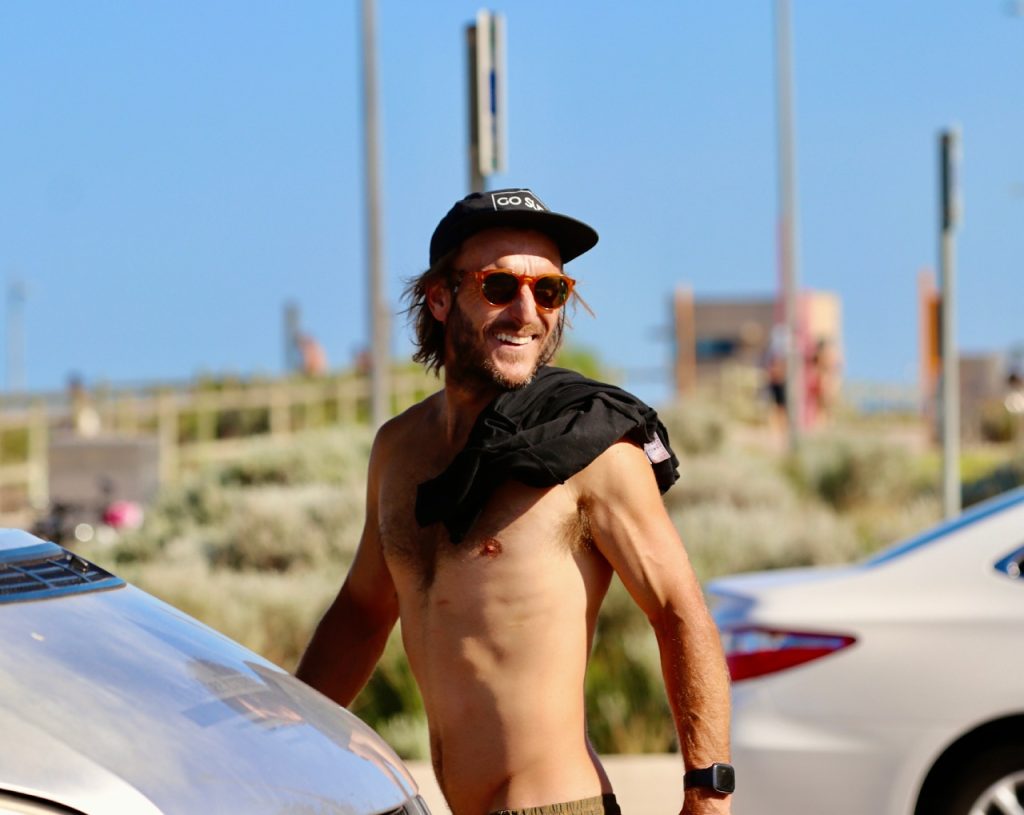
Tom “Bomber” Johnston owner and head coach at GoSurf Perth. ⒸTom Johnston
“GoSurf Perth was started back in 2008 by a local Perth surfer “Lofty”. It was a pretty lean operation from its humble beginnings. A ‘lifestyle business’ in the true sense of the word.” reminisces Tom “Bomber” Johnston, owner and head coach at GoSurf. “An old rust bucket of a van, a few old wetsuits, some surfboards and 2 or 3 uni students —one of which was me— who would come down to help Lofty run a few lessons when he needed a hand.”
Tom worked as a part-time surf coach while studying at Curtin University. After completing his Bachelor of Commerce, he travelled through Europe, Central and South America and Indonesia, sustaining himself as a surf instructor.
“Upon arriving back in Perth, I got a haircut and started a ‘real job’ in commercial property,” Tom says. “Bomber” Johnston was doing quite well in his new corporate life, but his passion for the sea always lingered at the back of his mind. Suddenly, life threw him an opportunity he didn’t expect.
“Lofty was selling the business and he wanted to know if I was interested. At this point in time I was 28 years old working for a big multinational commercial property company,” Johnston explains, “chained to my desk on the 29th floor of a Perth city high rise, ironically, with a beautiful outlook over the Indian Ocean.”
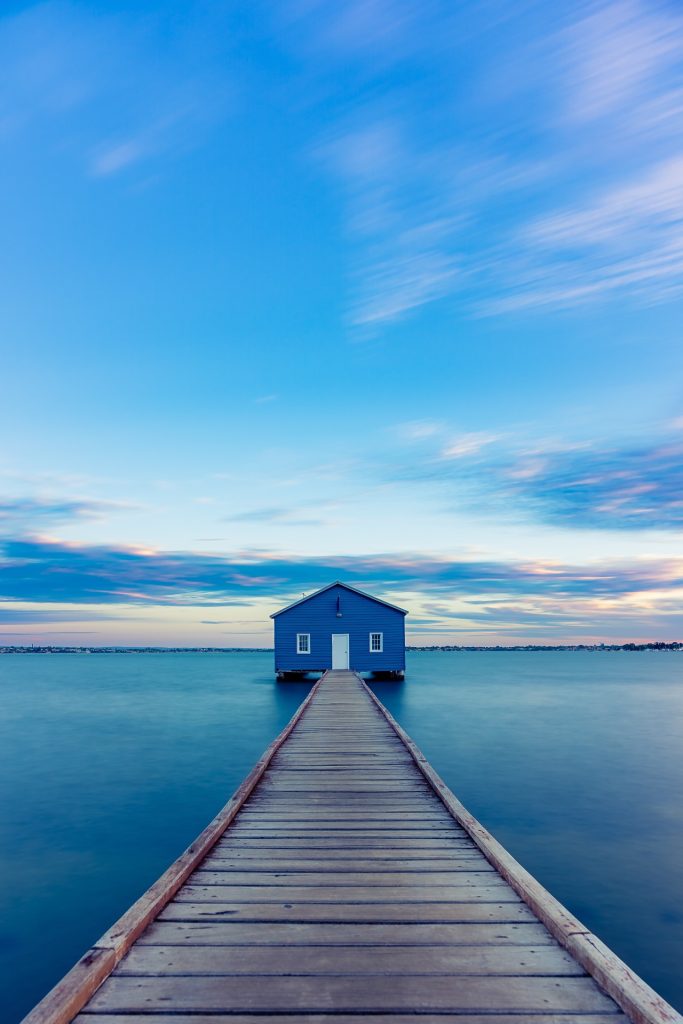
Perth WA, Australia. ©Yingchao Li
“It’s not that I hated the job but after 6 years of corporate life, the opportunity to take over one of the local surf schools kind of just fell on my desk,” he says, “I spent a few months contemplating the decision. Leaving a reasonably well-paid, secure job at a good company was a big life decision. I ended up pulling the trigger and before I knew it, I had ditched the 9-5 and swapped the Italian woollen suit for a far more comfortable neoprene one.”
Although it was a really risky decision to take, it was also the chance of a lifetime to reconnect with the fondest memories of his childhood, “I have surfed since I was about 5 years old, competing at a local, State and National level throughout my teenage years. My old man is a surfer so I guess I had no choice in the matter, teaching me the ropes as soon as I could walk… I have fond memories of standing on my Dad’s back whilst he bodysurfed waves to the shore.”
It’s curious how for most of us, the brightest moments in our minds are those where we felt carefree and the future was a mere afterthought, not a recurrent preoccupation. When we were children, everything seemed possible, and the simplest things turned into life-defining experiences. “I remember the first big wave —for a 13-year-old!— I caught on a reef wave on Phillip Island in Victoria,” says Keith de Kretser, owner of the Scarborough Beach Surf School, “I remember all the guys paddling out hooting at me and a legend Neil Luke who was an Australian surfing champion, yelling out ‘the amber glow kid’ as I had a second-hand amber tint coloured 6’ Island single fin, square tail. That was it, I was hooked!”
The Scarborough Beach Surf School has been functioning since the mid-’80s on the impeccable golden sands and crystal waters of Scarborough Beach.
“Established in 1986, Scarborough Beach Surf School had existed as a small operation and since I took over we have grown the surf school into one that now coaches up to 64 surfing novices a day. I am proud to be the owner of the longest-running Surf School on this planet.” de Kretser proclaims with a satisfied smile.
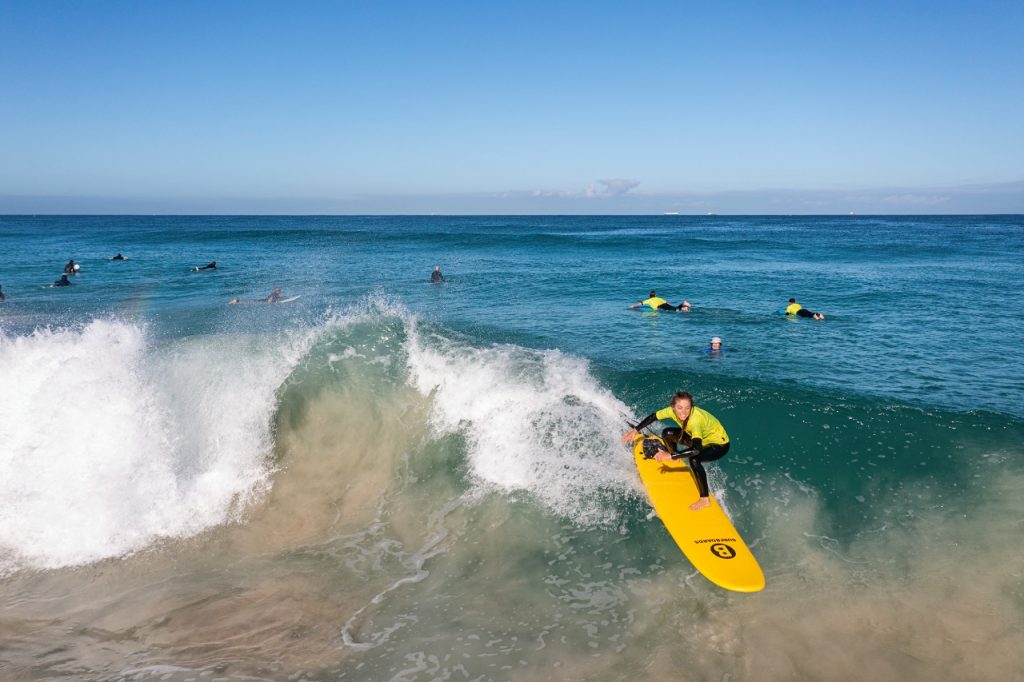
A day in the life of the Scarborough Surf School ⒸKeith de Kretser
“North of the State offers sunshine aplenty. A beautiful, rugged coastline where the desert meets the ocean,” says Johnston. “You will see whales, dolphins, and kangaroos and experience the true Aussie outback experience.”
Western Australia is the country’s largest state, covering nearly one-third of the nation. It’s home to close to 3 million inhabitants, which amounts to around 11 per cent of Australia’s total population.
This massive landmass, one of the largest country subdivisions in the world, is blessed with a combination of geographical factors that makes it a real-world version of the garden of Eden. It has various ranging zones that go from heavy rains in North Kimberley, through the mostly dry interior, to a Mediterranean climate in the southwest. Even snow falls occasionally in the far south during winter, particularly on the Stirling Range in the Great Southern region. Western Australia is essentially multiple countries in the one state.
The colours of the Kimberly and North West regions of WA are something that etches on your memory instantly. The bright turquoise waters combined with red ochre rock are so striking it makes you feel like you’re in a dream. It certainly helps to add to the surreal enchantment that you can take a camel ride (no, really) over orange-red dunes, and even find dinosaur footprints at Gantheaume Point. Nope, I’m not kidding.
In fact, we’re not the only ones making otherworldly comparisons. Tourism Western Australia is currently running a campaign precisely titled “Walking on a dream.”
The Southwest is a completely different experience. The Margaret River region offers a coastal culinary adventure with its sprawling vineyards, welcoming cellar doors and award-winning restaurants.
“The South of the State offers a slightly more temperate climate in comparison to the north,” Johnston notes, ”better known for its world-class surf and fresh produce such as wine, chocolate and cheese.”
WA’s south agricultural region is one of the most bio-diverse habitats on Earth, top six for marine biodiversity, and graced with dense Karri forests, a phenomenon that only occurs in the Warren biogeographic region. Karri is a species of tall forest tree endemic to the southwest of Western Australia. Growing to heights between 10 and 60 metres, it’s one of the tallest hardwoods in the world.
If camels, dinosaur footprints, and verdant vineyards aren’t enough, two hours north of Perth you’ll find yourself on the Coral Coast in the Gascoyne region, where you can experience the ultimate underwater adventure at Ningaloo Reef/Nyinggulu. Aside from being able to frolic along pristine beaches, pink lakes and explore Australia’s largest fringing coral reef, you can also swim alongside majestic manta rays, dolphins, whale sharks and humpback whales.
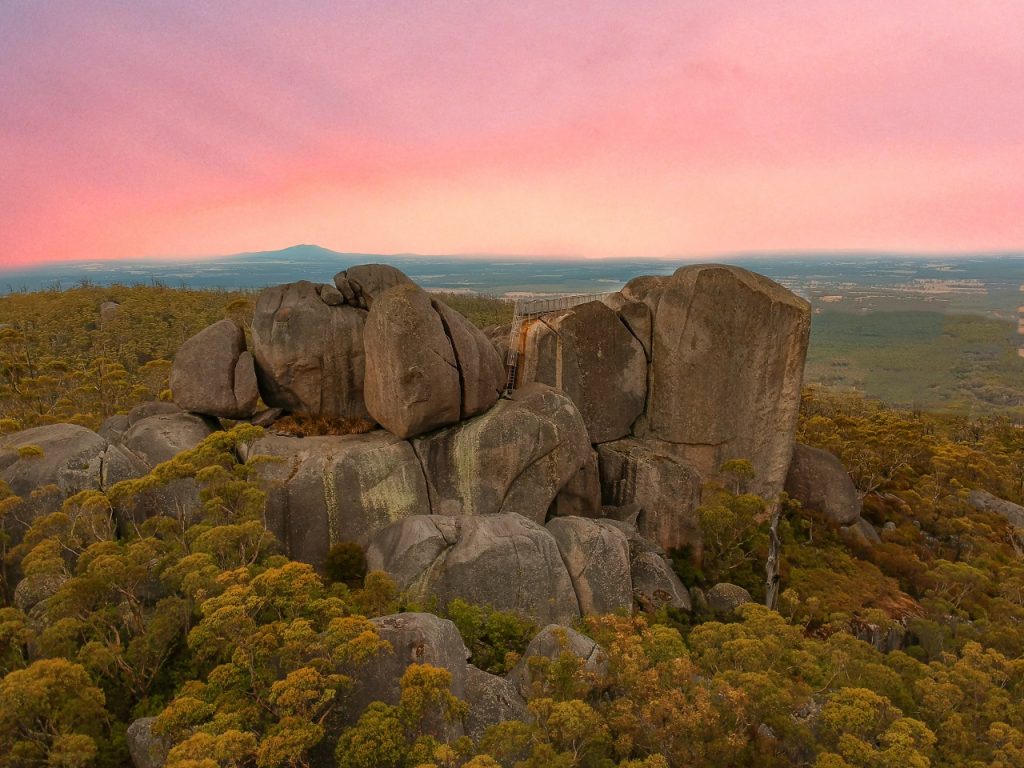
Porongurup Range, Porongurup WA, Australia. ©Harry Cunningham
From wilderness adventures in the bone-dry outback and diving in unspoiled marine paradises to fine dining in world-class restaurants, the wide range of experiences Western Australia has to offer attracts thousands of local and international visitors every year, making tourism one of the region’s most vibrant sectors.
The Government of Western Australia estimates the region received some 34,000 visitors in the second quarter of 2019. During the COVID pandemic, the number fell to 28,000 in the same period in 2021.
“Due to various challenges, the backpackers and students are not arriving in the numbers we saw prior to COVID” Keith de Kretser explains.
“Here in West Oz, many local businesses did their best to transition as quickly as possible, adapting their product and service offerings to serve the local market in the midst of sporadic outbreaks, uncertainty and lockdowns.” says Tom Johnston, commenting on COVID’s impact on the sector, “Government initiatives such as Job Keeper kept businesses from going broke, continuing to operate at a reduced capacity when restrictions allowed and when staff were not infected or considered close contacts.”
“Shutting our border to the rest of the Nation —and the world— during the COVID pandemic meant that we continued to live a relatively normal existence all things considered.” Johnston elaborates, “It also meant that basically, all the international workers left the country, returning home to endure their own lockdowns and mandates.”
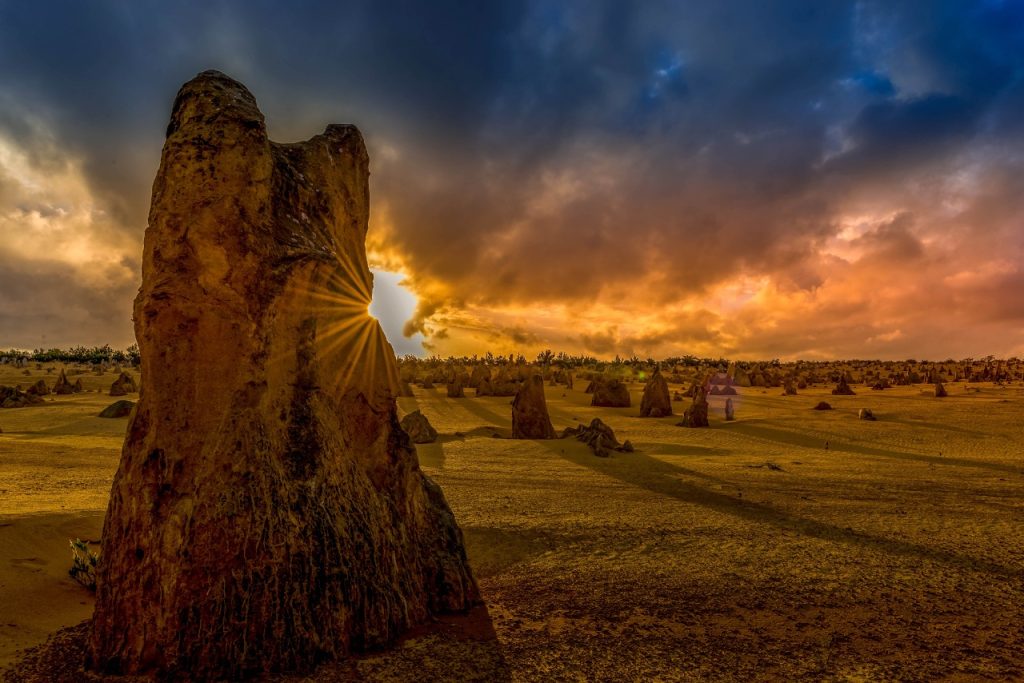
The Pinnacles Desert, Pinnacles Drive, Cervantes WA, Australia. ©Eddie Bugajewski
With COVID restrictions lifted and the world entering a phase of normality, the numbers have rebounded. The area received more than 29,000 visitors so far this year, with Tourism Research Australia projecting there will be a 6.3% increase in visitor nights for 2022-23. With the upcoming holiday season upon us, there is the expectation that Western Australia will go back close to its pre-COVID numbers, a situation that brings new challenges to business owners.
“Wham, bam! The border’s opened again. Businesses start scratching to transition back to normal operations. As many of us are now finding out, this is easier said than done,” explains Johnston.
To address the issue, the Government has launched a series of initiatives to make it easier for local and international workers to come to Western Australia to fill those workforce gaps and make WA home.
The portal western australia.jobs brings together job seekers and employers, offers training opportunities for workers, and provides all the information needed to move to WA.
It doesn’t matter if you’re looking to kickstart your career, build a set of skills, or if you’re simply after a change of scenario, Western Australia provides an exciting and unique opportunity.
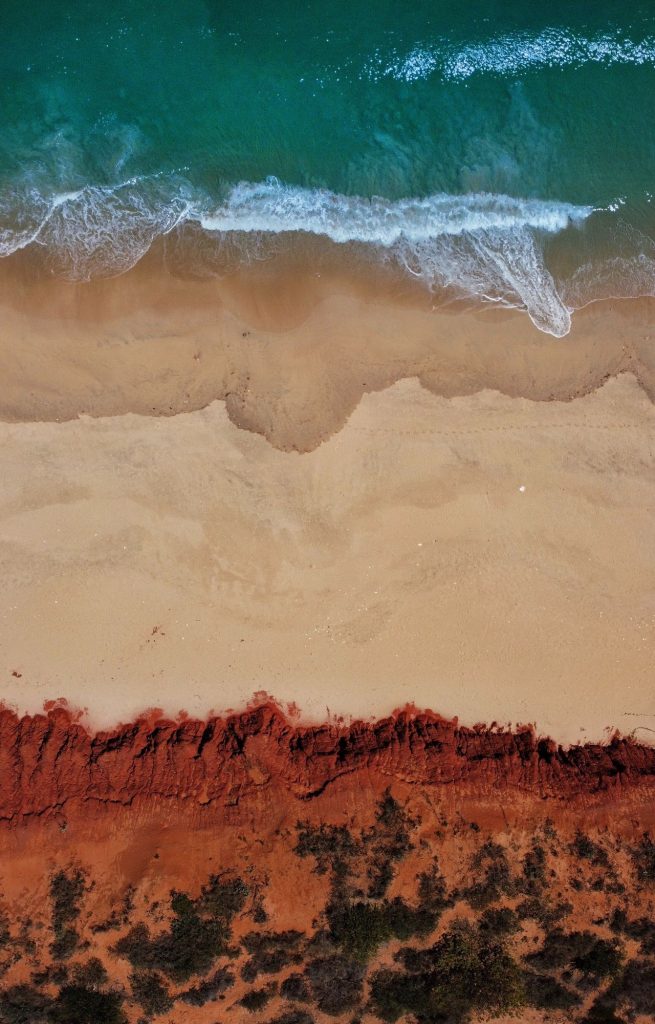
Broome, WA, Australia. ©Will Roocke
“WA offers variety,” Johnston states unequivocally, “variety in experiences, landscapes, climates and people. Perth and the surrounding suburbs offer an abundance of nature-based activities whether that be at our world-class white, sandy beaches, hiking or biking the city nature trails, or paddling along the Swan River.”
For Craig Berry, manager of the Scarborough Beach Surf School, coming to Western Australia is a no-brainer. “Living in WA’s all about the lifestyle and DOING STUFF! GETTING OUT THERE!” he says enthusiastically, “we’ve got the climate, the open, uncrowded spaces, and unspoilt natural environments that let you chase just about every dream you want here. (OK, maybe not snowboarding!)”
Like many, Craig was enraptured from an early age by the paradisiac conditions and inexhaustible sense of adventure that The Wildflower State has to offer. “I was 16 and had just bought a dinged-up second-hand board and taken it down to the beach to give it a go with my best mate” he recalls with visible affection, “it was a cold, windswept afternoon, terrible conditions, I had no wettie – and I loved it! I can still remember it so clearly, and I’ve been hooked ever since. Just a few months later, our boards were on the roof of the car and we were driving up the coast in search of waves.”
Just last March, new East Kimberley and Pilbara Designated Area Migration Agreements were signed (DAMAs) with the intention of helping local businesses address the labour shortages. Under the new DAMA regulations, small businesses will be able to sponsor overseas workers under the five-year agreements.
Interested workers have over 50 job categories to choose from, with different levels of experience required, plus flexible working options. There are also plenty of training and development opportunities available to upskill. With supportive policies and a growing industry, it feels like it’s never been a better time to work and live in Western Australia.
“I have been very fortunate to travel and surf all over the world, but the best thing for me about travelling is coming home,” says Keith de Kretser, “our clean air, thousands of miles of iconic beaches, surf spots and the colour of our Indian Ocean. As well as our locals in Western Australia who are so laid back and chilled, everyone has time to say good morning and have a chat. Surf culture is a way of life here.”
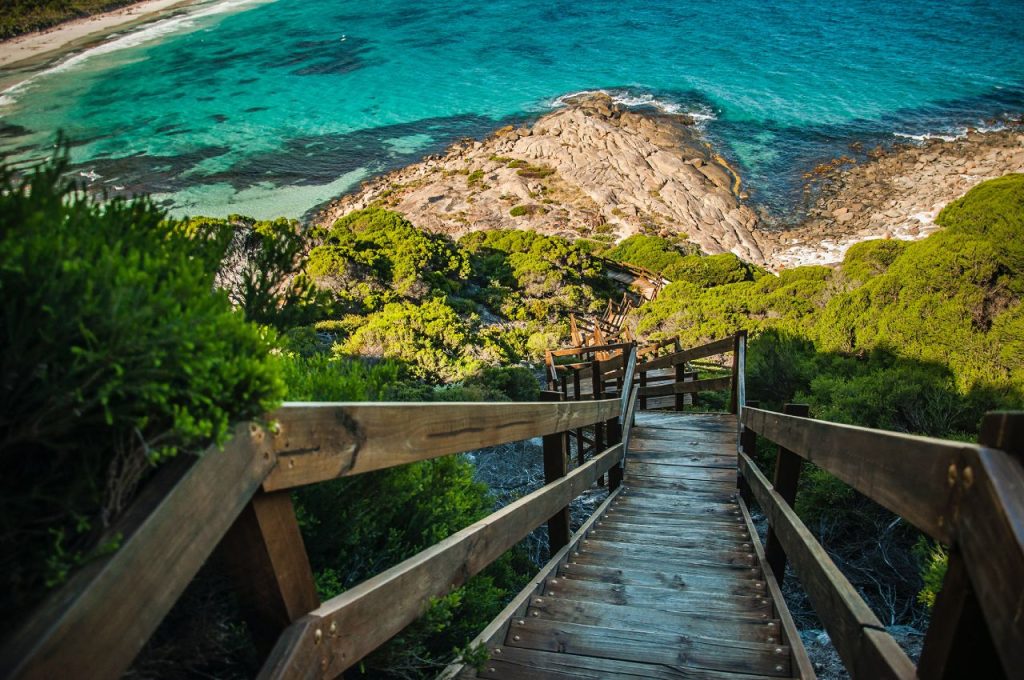
Observatory Point, Dalyup, WA, Australia. ©Zheng Wei Lim
Tourism Research Australia data indicates Western Australia’s tourism industry generates 5.7% of the State’s employment, some 78,000 people, with two-fifths of the workforce directly employed in the food and beverage sector, with a further 15% in the accommodation sector.
“I’ll tell you about my favourite day: Friday!” Craig Berry comments, “it’s up early, coaching a couple of surf sessions in the morning, then heading home to ‘refuel’ before a quick swim in the sea if there’s time. Then it’s beach volleyball in the afternoon with some mates. When the sun is going down, I’m heading home, happily exhausted, full of endorphins, and looking forward to a cold drink with the ones I love.”
A laid-back, relaxed lifestyle is a staple of Western Australia, people there live, love and work at a very different pace than the rest of the country.
“Lifestyle multiplied x 100,” says de Kretser, “our slow pace and the best weather in the world —too hot for some— friendly people and clean, clean environment. Lots of employment and surf, surf, surf!”
If you’re interested in working in Australia, the Government has various types of visas, depending on how long you are planning to stay, and the specificity of your work and employer. For tourism and hospitality workers, the most common types of visas are Working Holiday Maker visas, Temporary Skilled or Graduate work visas, and Student visas.
Keith de Kretser tells us what he seeks from prospective employees. “They need to have a big smile on their face and share the joy of our iconic sport,” he continues, “I once had an instructor that complained to another, ‘Keith wants me to be happy all the time at work!’ I couldn’t believe it; how can you not be happy standing waist-deep in our incredible Indian Ocean and getting paid to give people high fives and a few surfing tips!”
“I will always look for someone honest, reliable, punctual and a willingness to learn,” Tom “Bomber” Johnston opines, “Some of the best teachers we have had working with us at the school may not have been the most talented surfers themselves but they have the knack for teaching. I’ll always gravitate to hiring the ‘people person’. Someone with the ability to adapt to a variety of social situations and converse with different personalities, nationalities and ages. The ability to create a genuine connection with customers is paramount.”
One of the most recurrent recommendations to have a successful job application is to make sure not only that your resume is up-to-date but that your cover letter is relevant to the job you are applying for. A good cover letter should give a prospective employer a good understanding of your skill set, and a clear view of your goals and reasons to apply.
To make your job application stand out, WesternAustralia.Jobs outlines a series of useful tips:
- Don’t copy and paste the details of your cover letter for every application. Companies are as different as people are. Be sure to adapt your cover letter to the mission statement, values, skill requirements, and general vibe of each employer.
- The length of your cover letter and resume are incredibly important! Just include information pertinent to the job and leave out all the bits that are irrelevant to the position you are applying for.
- Self promote! Talk about the specific results and achievements you’ve made in previous jobs. Make your prospective employer feel they’re getting a monster asset if they sign you.
- Keep it simple! Don’t go crazy with the design, stick to basic fonts —no Comic Sans for the love of God— and check carefully the specific formatting requirements of each application.
- Ask your references for their permission to be included in your C.V.
- Don’t forget to include all of your contact details.
- Always include the hours that you are available to work.
- Unless it’s specifically mentioned in the selection criteria, don’t include certain personal information about yourself like age, religion, political affiliation, sexual orientation or marital status.
So, coming back to Heinrich Böll’s short story, at the end of the day, who do you want to be? The tourist, or the fisherman?
“What are you waiting for?” Craig Berry urges, “employment opportunities are booming, we have first-class universities and vocational colleges, and you’ll love the experience of —should I say it?— Australia’s friendliest city! Most of the people I know who have moved here never want to leave.”






































